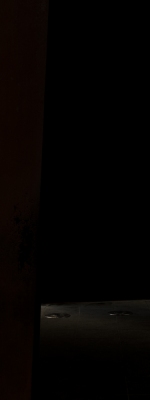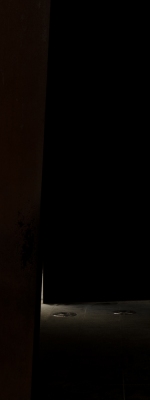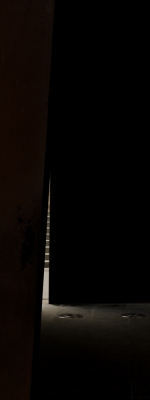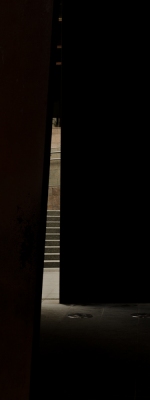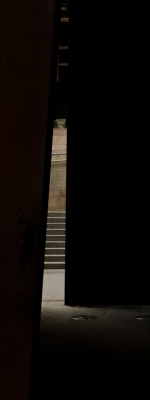Assignment Three asks us to keep a diary for a couple of weeks and then to interpret parts of it into a photographic self-portrait. We are also requested to include an introduction with our submission of around three hundred words.
Self-portraiture can take many forms and I decided to explore self-absented portraiture as a way of representing myself. In particular I looked to see how I could achieve my self-portrait in a metaphorical rather than in a descriptive way and I saw the assignment as an opportunity to try something different, to experiment and to take a risk with my approach.
Introduction:
My aims for this assignment were to keep myself out of the frame, to experiment and to take risks. I therefore looked to see how I could present my self-portrait in a metaphorical rather than a descriptive way.
An undercurrent in my life over the past months has been uncertainty surrounding my personal circumstances at work. However throughout January positive developments unfolded which mean that that my circumstances are a little more stable and I decided to use this period of uncertainty, transition and moving forward as the basis for the assignment.
My main influence was Luisa Lambri and her use of buildings, space and light to create self-portraits of absence. Inspired by her Untitled (Darwin D. Martin House) series, I decided to portray my work situation through a series of images using architecture, light and shadow to metaphorically represent myself. From the shadow of uncertainty, bands of light would represent the positivity and direction that developed as a solution to my circumstances became apparent.
I constructed a series of sequential images that show the passing of time and also my movements, both physically and emotionally, towards a more defined future. Influenced by Lambri I processed the images quite heavily and Berenice Abbott informed my decision to use vertical letter-box framing. Monochrome processing left the images looking flat and subdued so I elected to present them in colour.
Due to the confidential nature of my theme it was not appropriate to include the relevant excerpts from my diary in the assignment. I decided that text accompanying each image would be superfluous as the series stood adequately on its own and I also wanted viewers to be able to project their own selves and experiences on to the photographs (Bate, 2009). However I felt that an introduction to the series was necessary to provide some context.
Theme:
Coming out of the railway station in London every morning I need to walk around a tall wigwam-like steel sculpture in order to carry on to my place of work. It forms a forbidding barrier to my entry to the City yet rays of light offer a pathway through its core. Stone steps at the far side offer an escape from the structure, an escape from my current personal circumstances at work yet lead upwards into the unknown. Moving my position and gaze in order to photograph widening bands of light reflect both the passing of time and my movements, both physically and emotionally, towards a more defined future.
Processing and style:
Again influenced by Lambri, I applied quite heavy post-processing (for me) to the images, reducing exposure, deepening the blacks and shadows and enhancing whites and highlights in order to convey what I wanted to say. I also tried converting the images to monochrome but I felt that this left them flat and subdued so I decided to remain with the colour versions.
I used vertical letter-box framing for the series. This decision was inspired by seeing Berenice Abbott’s image View of Exchange Place from Broadway, New York, 1934 at the Constructing Worlds: Photography and Architecture in the Modern Age exhibition in London. As well as suiting the style of the composition, the framing implies the verticality of the City of London where new buildings are growing upwards in order for the Square Mile to expand and also, more metaphorically, the positive change to my personal circumstances.
All images were shot in RAW and processed in Lightroom 5 and Photoshop.
Research:
Having decided that I wanted to focus on self-absented portraiture I divided my research for the assignment into two areas:
The outcome of my research can be viewed by clicking on the links above.
The images:
Self
Self is my response to a set of personal circumstances at work, representing a period of uncertainty and instability whilst also embracing transition and positivity.
A series of self-absented portraits, Self uses architecture, light and shadow to explore my presence and experiences within an emotional space. Beginning in a place of darkness and uncertainty, small changes in my position and gaze reflect the passage of time as well as my movement, both physically and mentally, towards a clearer future.
Conclusion:
I really enjoyed this assignment. After initially dreading the idea of creating a self-portrait it was a relief to discover that I could keep myself physically out of the frame and I realised that the assignment gave me an incredible amount of scope as to what I could do. With this in mind I was adamant that I would work on my weaker areas and try to experiment, explore and take risks (the latter being particularly difficult for me), a process that I had started in the previous assignment and one that I was keen to build on.
I have taken a metaphorical approach to the assignment, using architecture, light and shadow as a means to express myself through a series of self-absented portraits. I analysed what I thought the brief was asking for (the presentation of myself, either directly or indirectly, as subject matter) and consider that my assignment submission meets this criteria. My justification for choosing to take such a non-literal approach is that I felt that it was important to challenge myself and to push myself far out of my comfort zone, to take risks and to continue my progression with making work that is expressive rather than being purely descriptive. I have underpinned my judgement in choosing this approach through my research where I found a major influence in Luisa Lambri. Lambri informed me that I could use space, architecture, shadow and light to create a self-portrait of absence. Rather than purely replicate Lambri’s work I took inspiration from her vision, developing my own ideas and trying to communicate my own experiences and emotions. The end result is that I feel that I have created a series of images that capture something inside of me.
References:
Abbott, B. (1934) View of Exchange Place from Broadway, New York, 1934 [online image]. Christie’s. Available from http://www.christies.com/lotfinder/photographs/berenice-abbott-view-of-exchange-place-from-5420855-details.aspx [accessed 26 January 2015]
Bate, D. (2009) Photography: the key concepts. New York: Berg
Lambri, L. (2007) Darwin D. Martin House [online images]. Marc Foxx Gallery. Available from http://www.marcfoxx.com/artists/2899/works/37325/1 [accessed 15 January 2015]

